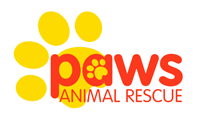What is dog reactivity?
Have you ever felt embarrassed of your dog’s behavior on walks? Felt the need to apologise to passersby? Felt ashamed of your dog’s behavior. Spinning, barking, lunging, aggression, snapping, howling, pacing, whining and inability to calm down are all visible displays of leash reactivity, It’s important to note, dogs can’t verbally express to us when they are feeling uncomfortable, stressed, frustrated, anxious or vulnerable. Dogs communicate this in other ways through their mouth or body language. Your dog’s embarrassing behavior is not them trying to give you a hard time, they’re having a hard time and are struggling to cope. Many dog owners don’t know to seek help until something unimaginable happens. It’s important to seek the help of a behaviour professional to resolve reactivity issues.
What causes Leash Reactivity?
When dogs are on-leash they are restricted in their movement to express themselves the only ways they know, they cannot circle each other, disengage if they need to, sniff the way they need to or get out of each other’s faces if they want to. Their movements are restricted, largely out of their control and greetings often occur head on, face To face on a walk. Typically, much of the time spent on a dog walk is walking on a path, in the direction coming head-on with every other dog and person on the same path walking the opposite way. These kinds of head on greetings are a predative movement in the dog world and cause a lot of upset for anxious or nervous dogs. This causes the biological “fight of flight” response to trigger and without any alternative means to cope or ability to disengage on-leash, many dogs feel their only option is to lunge and bark and make themselves scarier than the stimulant itself. What usually happens next is their handler typically removes the reactive dog away from the trigger-dog and immediately creates space, exactly what the anxious dog had been asking for.
The anxious dog then learns that this pattern of behavior is a really valuable habit to have when they feel uncomfortable and they need space. The big explosive reactions come from a means to cope from an overwhelming feeling of a lack of safety and being beyond their threshold for stress.
The most socialised, dog-friendly, easy going dogs can develop leash reactivity. Even if we do everything by the book for our dog from the get-go, leash reactivity can develop from an off-leash dog running up to our on-leash dog out for a walk one day frightening them out of our control or a working breed type with a high drive developing leash reactivity out of frustration at being confined on leash unable to move freely without restriction.
Working with a professional to help dissolve your dog’s leash reactivity is highly recommended as timing and technical skills are important while working within your dog’s threshold forstress. Working to build better communication between your dog and you, their handler is priority. This is achieved by working on a better pattern of behaviors based off trust and supporting the dog through scary experiences. Then putting this into practice in a way that makes your dog feel better on walks by the dog feeling supported through any frightening or tense situations they may come across and the owners feeling confident in their ability to manage their dog’s reactions.
How do we help our dog work through their reactivity?
Familiarise yourself with your dog’s body language, learn to recognise what it is they are trying to tell you so you can respond appropriately. Earn your dog’s trust by knowing when they are within a safe distance to a trigger that they can cope with and can learn to create positive associations with triggers and, most importantly, they can relax. This may start as simple as being at a distance from a trigger that your dog is comfortable enough to glance at the trigger and turn back to you for focus or to take a treat. Remember, training is all about keeping communication open with your dog. Start training focus cues like “watch me” and practicing this when there are no distractions around and slowly building this up around areas gradually increasing distractions. This is a good starter basis for teaching our reactive dog that essentially you’ve ‘got their back’ and there is no need for defensive behaviors.
It sounds hard but with time and some practice, it gets much better. It is an exhilerating moment the first time a reactive dog chooses to handle being in the presence of a trigger by turning look at their owner rather than lunge or bark. I have no shame in admitting I’ve leapt in the air with excitement with an owner on more than one occasion when this happens. You reach a point when you don’t even need to ask your dog for focus and they know they can disengage themselves without your guidance.




